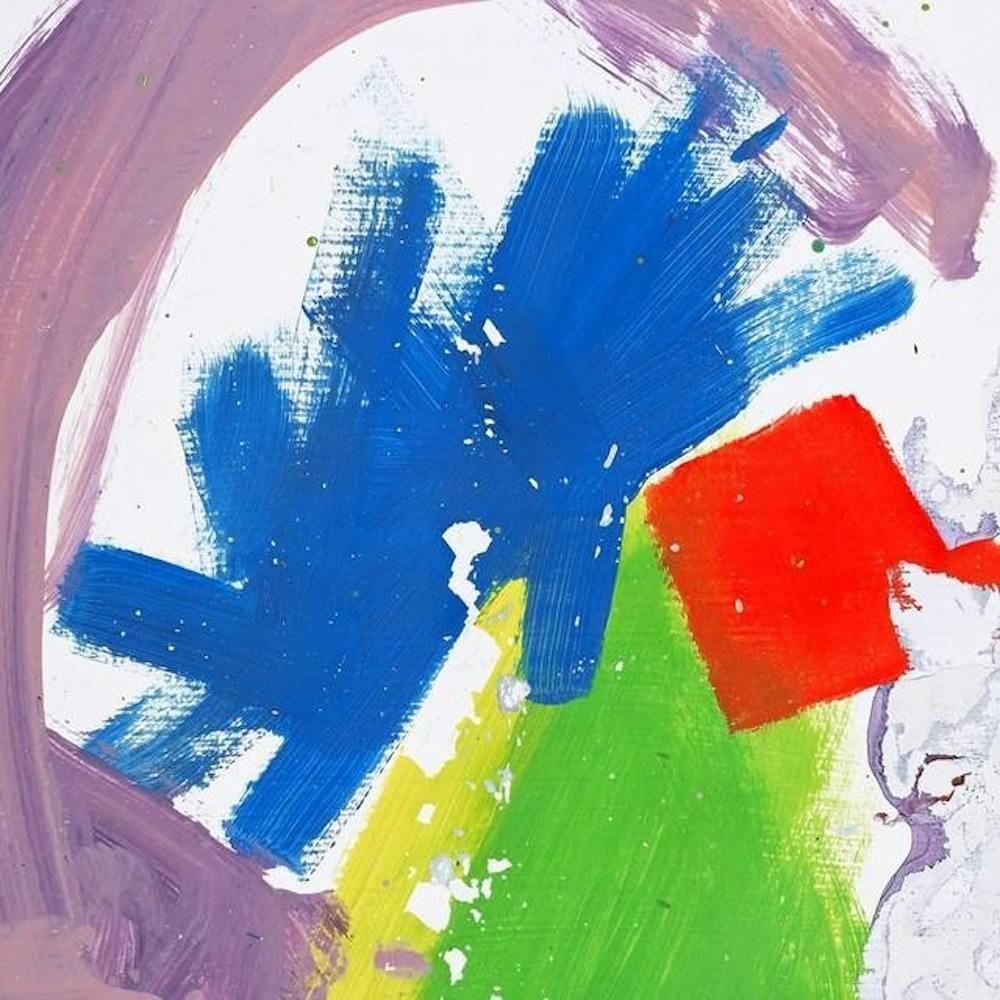The easiest way to understand the difference between alt-J’s debut album “An Awesome Wave” and their new release “This Is All Yours” is in the album art.
While “An Awesome Wave’s” cover is edgier, featuring darker colors and alt-J’s classic triangle emblem, “This Is All Yours” features something lighter and more colorful — the abstract color swatches implying a switch from the defined to something more experimental.
It’s no surprise that such a shift in alt-J’s sound has occurred between the two albums. When former bassist Gwil Sainsbury left the band in January 2014, fans were left uncertain as to what alt-J would do next — only to be reassured by the three remaining band members that they would push through the tough time to produce a killer sophomore album.
And they delivered — sort of.
The trio was able to maintain the effortless fluidity “An Awesome Wave” possessed, making it clear that alt-J considers the whole to be greater than the sum of its parts, or in this case, the individual singles. Their carefully crafted intros and interludes guide the listener from track to track, never sparing a moment to unintentional silence.
And their compositional sophistication remained as present as ever. While many bands utilize instruments as a background to the foreground vocals, alt-J’s ability to meld the two and view the voice as an instrument equal to that of the drums or bass has always been impressive — making it clear they understand music on a level many others only aspire to. Plus, the artists clearly embraced Eastern Asian musical elements on “This Is All Yours,” treating the album as a sort of journey through Nara, Japan and experimenting with new instruments and sounds.
For better or worse, some of the darker, edgier themes found in earlier songs like “Fitzpleasure,” “Taro” and “Ms” were absent from “This Is All Yours,” traded instead for lighter, more uplifting tunes like “Left Hand Free” (which was clearly crafted to be a popular radio single) and “Warm Foothills.” That said, “This Is All Yours” songs like “Every Other Freckle” and “Hunger of the Pine” are arguably the most similar to those on the first album, and those were released as singles — a potential attempt to ease the sonic transition or cling to defining themselves as harder-hitting and edgy.
One of the biggest treats on “This Is All Yours” was the 12th track, “Bloodfood, Pt. II,” which combined elements from “An Awesome Wave” favorites “Fitzpleasure” and “Bloodflood” to create a sort of reprise of their first album. Slowed down and combined, the songs sound more haunting, allowing listeners to zero in on their somber messages and further immerse themselves in the scenes alt-J is trying to create for them.
It’s hard to say whether “This Is All Yours” was a disappointment as compared to the band’s nearly perfect first album, and I’d encourage listeners to consider the sophomore release as more of a change than either a progression or regression. “This Is All Yours” is different — in some ways significantly so — from what the band was doing before, but the changes have more to do with preference than value. I’m sure a handful of fans passionately prefer “An Awesome Wave,” but it’s equally likely that alt-J’s lighter themes and Asian musical elements gained them several new fans (and I’m sure the additional radio exposure didn’t hurt).
I’m intrigued, as always, to see what the group creates next. The third album will undoubtedly provide insight into which of the “This Is All Yours” changes alt-J is holding onto and which were merely experimental and temporary.


